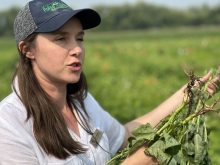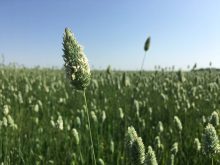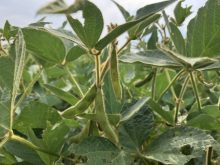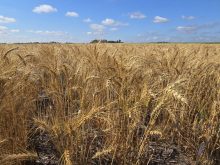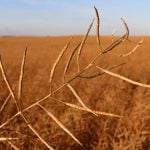Farmland values increased in all four western provinces in the first six months of 2004, but that trend could slow or be reversed in the second half of the year.
“We’re seeing a number of potential negative influences for the next reporting period,” said Roy Hjelte of Farm Credit Canada, which compiles and publishes the semi-annual survey of land prices.
Those factors include lower grain prices, the poor quality of this year’s crop and its effect on farm income, the increased value of the dollar and BSE’s continuing impact on cattle markets.
Read Also

Fusarium head blight mycotoxin detector in the works
A PhD student at the University of Saskatchewan has been working on developing a method of detecting fusarium damaged kernels to ease the struggles of producers, agronomists and industry.
“Those will all likely affect the next period,” Hjelte said.
In its assessment of changes in farmland values in the six months ending July 31, 2004, FCC reported increases of 1.1 percent in Saskatchewan, 1.3 percent in Manitoba, 4.2 percent in British Columbia and 4.4 percent in Alberta.
Nationally, farmland values increased by an average of 2.3 percent during the period, compared with 1.5 percent during the previous six months. Values increased by 3.45 percent in Ontario, 2.9 percent in New Brunswick and 1.3 percent in Quebec and were unchanged in Prince Edward Island, Nova Scotia and Newfoundland.
Hjelte mentioned several positive factors that are counteracting negative influences in Western Canada: good soil moisture levels; good crop yields and the fact that more land tends to go on the market during tough times.
“People may have been looking at that quarter section across the road for 10 or 20 years and it doesn’t come available in good years necessarily.”
Hjelte said it’s not really possible to isolate specific factors, such as BSE, and say how much of an impact they have had on prices.
“It’s really all just part of the mix.”
However, he added that the survey is based on cultivated land and does not include native pasture land, which might be most affected by the depressed cattle market.
Here’s what the FCC report had to say about land values in each of the western provinces:
- In Saskatchewan, values increased for the fifth consecutive reporting period, following a three-year period of declining prices. Prices were relatively stable in most areas of the province. Good moisture conditions supported land sales in the spring, along with lower interest rates and some optimism about grain and oilseed prices. Farms in the province continued to get larger, with many producers buying adjacent properties. There was also continued strong interest from outside the province in buying Saskatchewan’s relatively low-priced farm land.
- Alberta led the country with a 4.4 percent increase in the reporting period, as it has for much of the past decade. Land auctions have shown strong demand for cultivated land, due in part to good moisture conditions. Irrigated land was stable to slightly higher and rental rates remained strong. Land based on the beef industry appeared to be in a “holding pattern” relative to grain land. The spin-off effect from the province’s strong oil and gas economy also worked to support land prices.
- In Manitoba, land used for grain, oilseeds and forages remained relatively stable, while land for special crops continued to drive the market upward. Land values increased substantially in areas where potato production has been expanding, with some lighter-soil land selling at three to four times grain land prices.
- British Columbia continued to be marked by several distinct farmland markets. In the lower mainland near Vancouver, high-quality land suitable for small fruit production and population pressures combined to produce high prices. In the Okanagan Valley, land suitable for larger fruit increased due to supply and demand pressures. In the interior, BSE depressed the market for ranches, while in the Peace region, oil and gas contributed to stable or increasing land values.
The FCC survey is based on 245 benchmark properties across the country, representing the most prevalent classes of agricultural soil in each census district. FCC appraisers estimate market value each Jan. 1 and July 1 using recent comparable bare-land sales.




